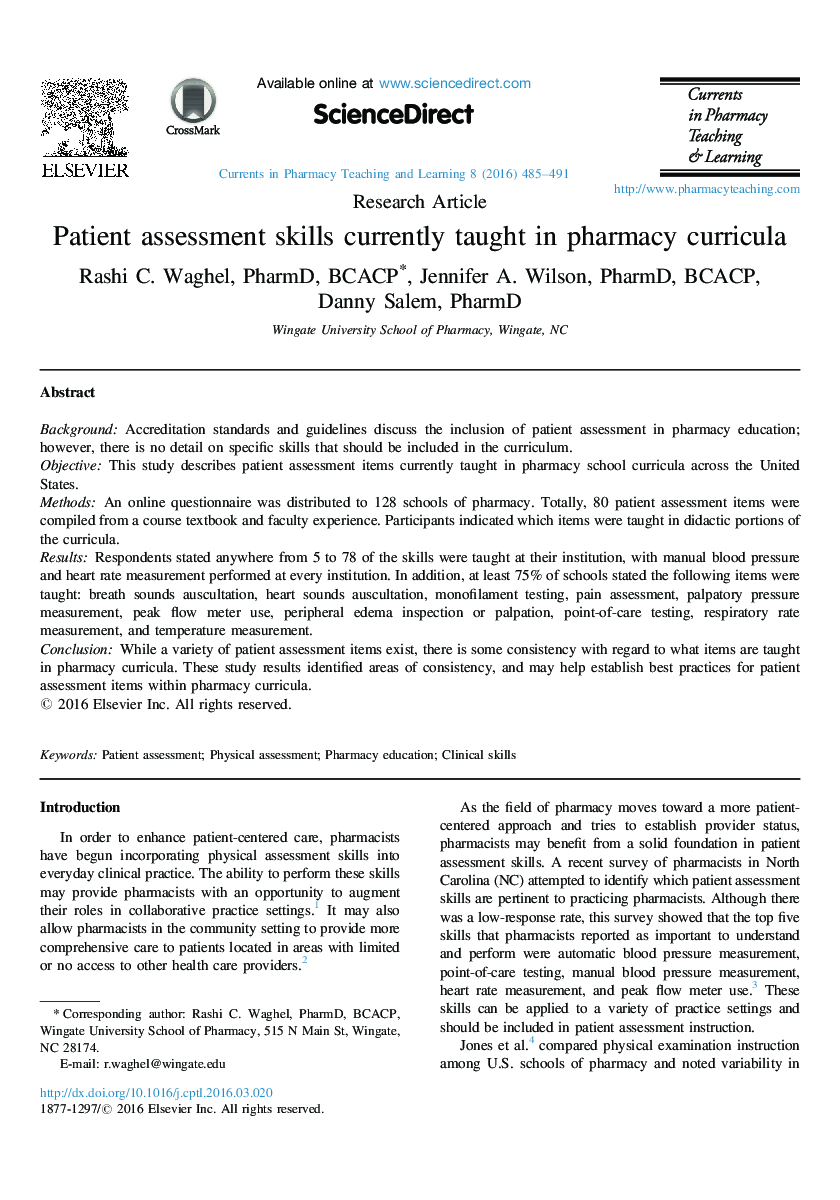| Article ID | Journal | Published Year | Pages | File Type |
|---|---|---|---|---|
| 352942 | Currents in Pharmacy Teaching and Learning | 2016 | 7 Pages |
BackgroundAccreditation standards and guidelines discuss the inclusion of patient assessment in pharmacy education; however, there is no detail on specific skills that should be included in the curriculum.ObjectiveThis study describes patient assessment items currently taught in pharmacy school curricula across the United States.MethodsAn online questionnaire was distributed to 128 schools of pharmacy. Totally, 80 patient assessment items were compiled from a course textbook and faculty experience. Participants indicated which items were taught in didactic portions of the curricula.ResultsRespondents stated anywhere from 5 to 78 of the skills were taught at their institution, with manual blood pressure and heart rate measurement performed at every institution. In addition, at least 75% of schools stated the following items were taught: breath sounds auscultation, heart sounds auscultation, monofilament testing, pain assessment, palpatory pressure measurement, peak flow meter use, peripheral edema inspection or palpation, point-of-care testing, respiratory rate measurement, and temperature measurement.ConclusionWhile a variety of patient assessment items exist, there is some consistency with regard to what items are taught in pharmacy curricula. These study results identified areas of consistency, and may help establish best practices for patient assessment items within pharmacy curricula.
